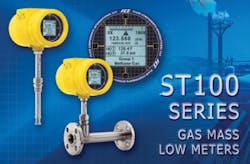By Alex Altman
The Santa Ana water disputes of the late 1960s, and the resulting court action and adjudication of the 2,200-mile watershed that makes up the Santa Ana River, bring sharp focus to a number of challenges faced by inland water agencies. In Southern California, the diminished reliability of water supply from the San Joaquin Delta, coupled with the high expense and energy demand of moving water from the north, has increased the need for reliable local water supplies.
As local groundwater basins are tapped, increased salinity and decreased water quality are obvious repercussions. According to Nancy Stoner, deputy assistant administrator for the Environmental Protection Agency’s Office of Water, nitrate violations have doubled nationwide. Nitrate concentrations have also doubled, and continue to rise. In addition, water agency commitments often go beyond compliance with the EPA’s evolving standards, with requirements – both in terms of quantification and nitrate levels – dictating what is sent downstream.
How does a water agency tackle these issues, ensuring reliable supply and reasonable costs to its customers in the face of growing challenges?
For the Western Municipal Water District (Western), an agency that delivers about 125,000 acre-feet of water to 24,000 retail and eight wholesale customers over a 527-square-mile area of California’s Riverside County, the answer is an effective (and expanding) use of desalination, in conjunction with the active development of innovative new treatment technologies and collaboration with other agencies that share the resources of the Santa Ana Watershed.
“Western has long recognized the importance desalination plays in improving local water quality and developing sustainable local supply,” said General Manager John V. Rossi of Western. “The Arlington Desalter, which Western owns and operates, was the first brackish water desalination facility in Southern California. Western is also a partner in the Chino Basin Desalter Authority, a Joint Power Authority (JPA) that operates two additional desalters in the Chino Basin.”
Need for Desalination
While Diamond Valley Lake, with its 800,000 acre-foot capacity, is an important hedge against future catastrophic disruption of Southern California’s water supply, the groundwater basins in the Santa Ana Watershed exceed that capacity many times over, generally with excellent percolation rates and water quality. Lower in the basins, however, generations of agricultural land use (including intense dairy farming) and rural areas with high concentrations of septic systems have left the unfortunate legacy of high nitrogen levels in the groundwater. As fertilizers percolate down into the water supply, groundwater that is good quality begins to deteriorate to a level that requires treatment. The Arlington Basin, by way of example, saw TDS levels at 1,000 mg/L.
Western’s needs extend beyond taking care of its own local water supply. As regional water resource management agency in the middle of the watershed, it must respect the simultaneous and sometimes conflicting needs of water agencies upstream and downstream, complying with regulated quantity and constituent levels released to the lower watershed. The hydrology of the region makes this task a complicated one: shallow portions of the basins have the tendency to upwell along fault lines and in certain other areas, overflowing into the Santa Ana River and pushing lower quality water downstream.
Desalters
In response to these concerns, the Arlington Desalter was originally constructed in 1989 as a nonpotable facility. It was tasked with taking stale, unused groundwater that was available locally in large quantities, and treating it before sending it downstream for recharge in Orange County. As water became more scarce and expensive, interest in and justification for converting Arlington to a potable facility began to build. After 14 years in operation, a Proposition 13 Grant in 2003 funded a significant upgrade; the Arlington Desalter now has the capacity to deliver 7. 2 mgd of potable water to the city of Norco – providing more than 60 percent of that city’s drinking water.
An examination of the desalter at Arlington provides a useful view of the process. Five wells draw water from a local well field. The water is then treated with descalant before being pumped at 180 psi through the facility’s membrane trains. Each of Arlington’s three trains contain 48 vessels, with six membranes per vessel. Good water is diverted out; what remains grows increasingly concentrated, putting additional burden on the final 12 vessels of each train, which are carefully monitored.
The treated water then goes through degassifiers that strip off CO2 to remove taste and odor, and it is mixed with raw water to achieve an ideal blend. If the water meets specifications, it is treated with chlorine and caustic soda to bring pH up to between 8.1 and 8.2 (for pipe longevity) before being delivered to Norco.
Arlington functions at about 81 percent recovery, creating a little over eight gallons of potable water for every 10 gallons drawn from the basin. The remainder is sent via the Inland Empire Brine Line, a 93 mile long, 30 mgd-capacity high salt content waste stream, to a facility in Orange County where it is mixed with treated domestic wastewater and safely dispersed into the ocean. As a result, more than 7 million gallons of safe, potable water is made available to local residents daily, all originating from a contaminated groundwater source.
The Chino I and II Desalters, operated via a JPA consisting of Western, the Santa Ana River Water Company, Inland Empire Utilities Agency, the Jurupa Community Services District, and the cities of Chino, Chino Hills, Norco, and Ontario, were developed with a more holistic engineering plan. In addition to desalination, the facilities capture storm water, which is very low in TDS salts, and blend it with higher salt laden water. The desalters use methane from the Chino Basin to generate the energy that powers their pumps. A $130 million expansion project is planned at Chino, funded by revenue bonds as well as state and federal grants procured by Western.
Benefits
“With water supply from the Delta less consistent, agencies like ours need to rely more heavily on developing local supplies,” said Jack Safely, water resources manager at Western. “But the benefits of desalination extend beyond additional local potable water.We improve our resilience during multiple dry years. We reduce the energy demand of moving water down from the north. We improve our groundwater quality. And we protect the water quality and ecosystems downstream. ”
By drawing down water levels, desalters can help shallow basins like Chino and Arlington to exert hydrologic control over their water systems where they would normally overflow into the Santa Ana. These hydrologic barriers are effective at significantly reducing the flow of degraded groundwater downstream, improving water quality for the entire watershed. Pumping and treating local groundwater also contributes to the restoration of water quality in basins with a history of contamination from agricultural use. And the Maximum Benefit section of California Water Code allows agencies to recharge water that is above historical ambient water quality levels provided that they monitor and protect water quality downstream. Desalters help Western abide by this mandate.
Collaboration
Since water resources pay no attention to municipal and other jurisdictional lines above ground, a spirit of collaboration, even partnership, is critical in the long-term health of a 2,200-mile watershed. Western is one of five of the member agencies of the Santa Ana Watershed Project Authority (SAWPA), a regional water resources planning and project implementation organization. Western’s general manager, John Rossi, is a court-appointed watermaster, responsible for reporting compliance with water quality and quantity provisions of court orders regarding water rights issues in the Santa Ana watershed.
SAWPA played a lead role in the development of the Arlington Desalter, the cost sharing of the Arlington facility by Western and Orange County, as well as the JPA created to manage the Chino desalters. It developed the Regional Water Quality Control Board’s Basin Plan, and continues to examine long-term strategies to support salinity management. To fund the Inland Empire Brine Line, SAWPA sold advance shares of the pipeline’s capacity in addition to seeking federal grants through the Clean Water Act. Today, though only about 12 mgd is being used, the Brine Line’s full 30 mgd capacity is spoken for.
In addition to treatment and disposal, SAWPA has an active monitoring program in place with its member agencies dedicated to tracking trends in salt buildup. It administers the Basin Monitoring Program Task Force, under which 17 water and wastewater agencies in the Santa Ana Watershed compile monitoring data to evaluate the water quality of the Santa Ana River on an annual basis and the groundwater basins throughout the watershed every three years.
SAWPA’s Maximum Benefit demonstration was the first in Southern California.
Future
Clearly, desalination is a mature technology. But a number of innovative developments are on the horizon that will augment this technology in new and exciting ways. Current membranes used to treat water are not extremely efficient, rejecting 15 to 20 percent of water. Western has successfully completed a pilot project using a biologically active denitrification process to produce drinking water at Arlington. The project has already received conceptual approval and acceptance from the California Department of Public Health for a full-scale facility, which would use biofilters, polishing filters, chemical disinfection facilities, and supply pumps to treat drinking water. Using this process, as much as 98 percent of water can be utilized.
Western’s conditional permit is the first non-proprietary system to be designed in the United States, with design paid for in part by matching EPA funds. Western has also just approved a million dollar study on brine concentration, a technology that uses centrifuges to separate concentrate from water. This concentrate can then be used in things like cement, giving inland agencies without a brine line to the ocean a potential option for dealing with their concentrated salts.
These technologies, along with expanded use of desalination, are part of a growing toolkit with which water agencies seek to provide their customers with a secure and reliable water supply.
WW
About the Author: Alex Altman is a freelance writer based in Southern California. He has written extensively on the region’s renewable energy movement, its water resources and related challenges.
More WaterWorld Current Issue Articles
More WaterWorld Archives Issue Articles




